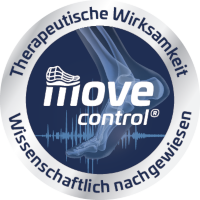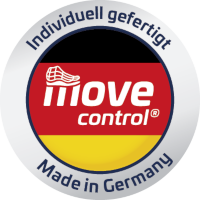Heel Spur
What is a heel spur?
In short, a heel spur is a bony growth of the tendon where it attaches to the heel bone. The spur is generally between one and five millimeters long and forms after long periods of strain on the arch of the foot. The pain, however, is not caused by the bony growth itself but rather by small tears (microtrauma) that occur at the tendon base.

What can be done to treat a heel spur?
This is good news for anyone dealing with a heel spur: They respond to treatment and rarely require surgery. The first step is simply to relieve strain on the foot, which begins by choosing comfortable, appropriately cushioned shoes. If you are active, it is important to warm up the calves and feet properly and, if the pain is acute, to consider taking a break from exercise for a while. Other forms of treatment include medication that relieves pain and inflammation, cold applications, and physical therapy. For more information, speak to your doctor or pharmacist. Important: It is always possible that the pain will return when the root cause has not been dealt with, such as being very overweight (obesity) or physical strain combined with inappropriate shoes.
Customized orthopedic insoles can play an important role in the treatment of heel spurs. Insoles can provide targeted pressure relief and have cushioning elements that reduce strain and pain. It is important that the custom-made insoles correct misalignments such as pes valgus, flat feet, and high arched feet.
Be careful with off-the-shelf inserts. These can be ineffective or they can even make the existing pain worse. The process of fitting the orthopedic inserts should always be left to the experts. A movecontrol partner near you can find precisely the right movecontrol insoles for you. Simply make an appointment and come in for a free consultation.
movecontrol Insoles: Effective Heel Spur Treatment
movecontrol has orthopedic insoles that provide proven pain relief.
Our trained movecontrol partners can fit the inserts for you individually.
Heel Spur
Pain When Walking
Soft cushioning in the movecontrol insole that is individually positioned for your personal pain point relieves both pressure and pain. Special polyurethane foam relieves pressure on the foot and increases walking comfort.




The costs for orthopedic insoles are partially covered by your health insurance
If your doctor has diagnosed a heel spur and prescribed you insoles, health insurance will pay for a part of the costs. The co-payment within the German statutory health insurance is a maximum of €10. However, this co-payment is not usually enough to ensure that the treatment is effective in the long term. Depending on your individual requirements, movecontrol premium insoles can have higher costs. The specialist near you can give you more information about costs.
movecontrol Insoles for Pain Relief
The innovative mix of materials and cushioning in movecontrol insoles make them incredibly effective in relieving the pain caused by heel spurs.
Hygienic Fabric Covering
Cushioning
Elastic and Durable Polyurethane Foam
Midfoot Stabilization
FAQs – Frequently Asked Questions
What to Know About Heel Spurs
What are the symptoms of a heel spur?
Typical symptoms of a heel spur include pain in the heel either with the first step upon waking (this is pain that disappears as the day progresses, but can become chronic at a later stage) or after prolonged physical stress or strain. Patients often describe the pain as stabbing.
What are the causes of a heel spur?
Causes include being overweight or obese as well as using shoes that do not provide enough cushioning. Working under constant physical stress (lots of walking or standing, unilateral foot movements) can also lead to a heel spur. Athletes who train with poor running technique, footwear that is too stiff, or without a proper warm-up are also at risk of developing a heel spur. Often, foot abnormalities, such as flat feet, pes valgus, and high arched feet, can cause a heel spur to form. A calcaneal spur is a degenerative condition (caused by wear and tear), which means that the risk of developing one increases with age. Heel spur patients are generally between 40 and 60 years of age; women are more commonly affected than men. In athletes, the condition can develop much earlier in life.
Why are movecontrol insoles effective in treating a heel spur?
movecontrol partners are trained, experienced specialists when it comes to the treatment of orthopedic conditions such as a heel spur. They use the latest in measurement technology to perfectly fit your insoles to your requirements. Then, movecontrol custom manufactures your shoe insoles using a variety of different materials. These include a highly elastic, durable polyurethane foam that relieves pain and pressure on your specific pain point.
